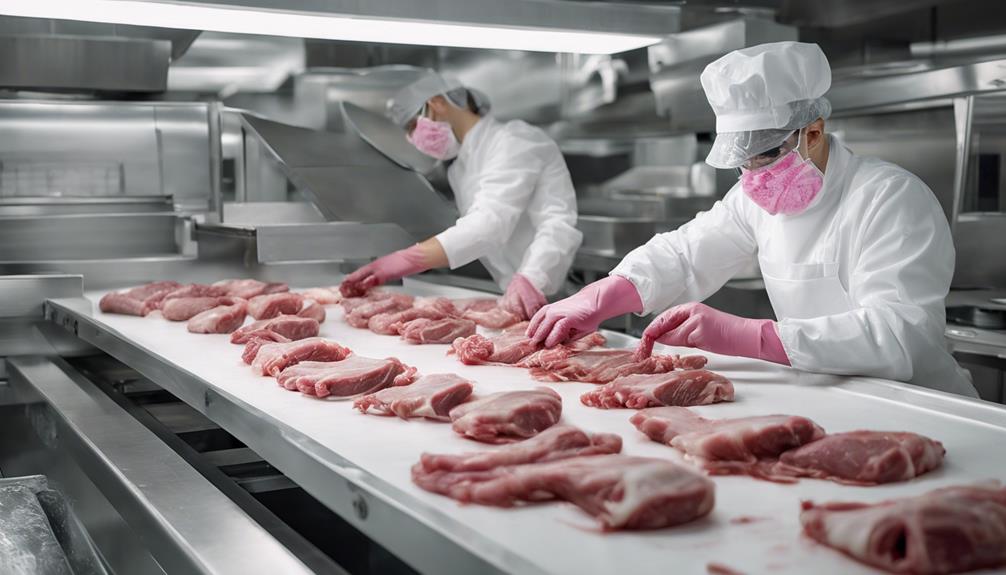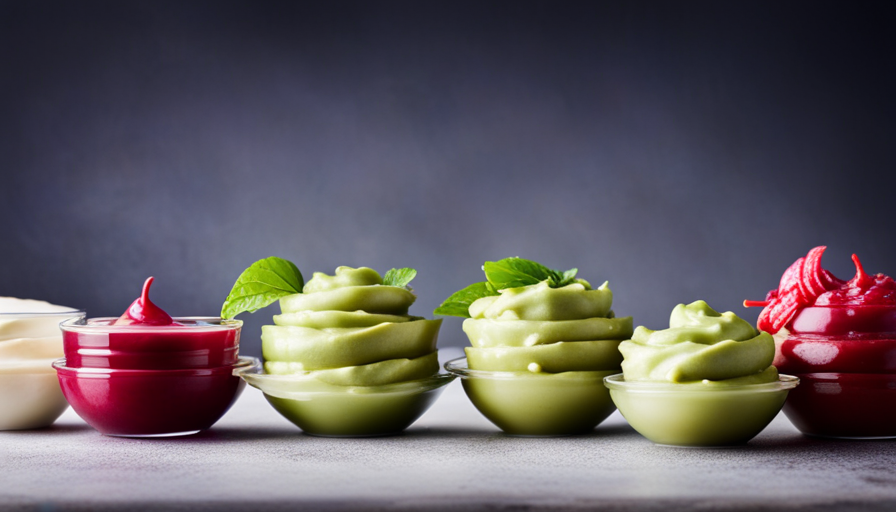When dealing with raw meat and produce, it is crucial to change gloves in order to prevent cross-contamination and reduce the risk of foodborne illnesses. It is recommended to change gloves after touching raw meat, before handling produce, and whenever transitioning between different food tasks to maintain hygiene standards and minimize the spread of harmful bacteria. Ensuring proper glove changes is essential for food safety and the well-being of consumers, as it helps prevent cross-contamination between various types of foods.
By following strict glove-changing protocols, food handlers maintain high hygiene standards and safeguard against potential contamination risks. These practices are vital for guaranteeing safe food handling processes and keeping consumers healthy.
Key Takeaways
- Change gloves after handling raw meat to prevent cross-contamination.
- Put on new gloves before touching produce to maintain hygiene.
- Switch gloves when moving between tasks with different foods.
- Prioritize food safety by changing gloves regularly.
- Reduce the risk of foodborne illnesses by adhering to glove-changing protocols.
Importance of Proper Glove Use
Proper glove use is essential for preventing cross-contamination between raw meat and produce. When handling food, especially raw items, wearing gloves acts as a vital barrier to protect against harmful bacteria and reduce the risk of foodborne illness outbreaks.
As food handlers, we must prioritize food safety by changing gloves between tasks to maintain hygiene standards. By following glove-changing protocols diligently, we can guarantee that ready-to-eat foods remain uncontaminated by pathogens present in raw meat.
Additionally, along with changing gloves, proper handwashing is also essential to maintain cleanliness and prevent the transfer of bacteria. Adhering to these practices not only safeguards the health of consumers but also upholds the reputation of the establishment with regards to food safety.
Understanding the significance of gloves in handling raw food and consistently changing them when necessary is fundamental for all food handlers.
Key Times to Change Gloves
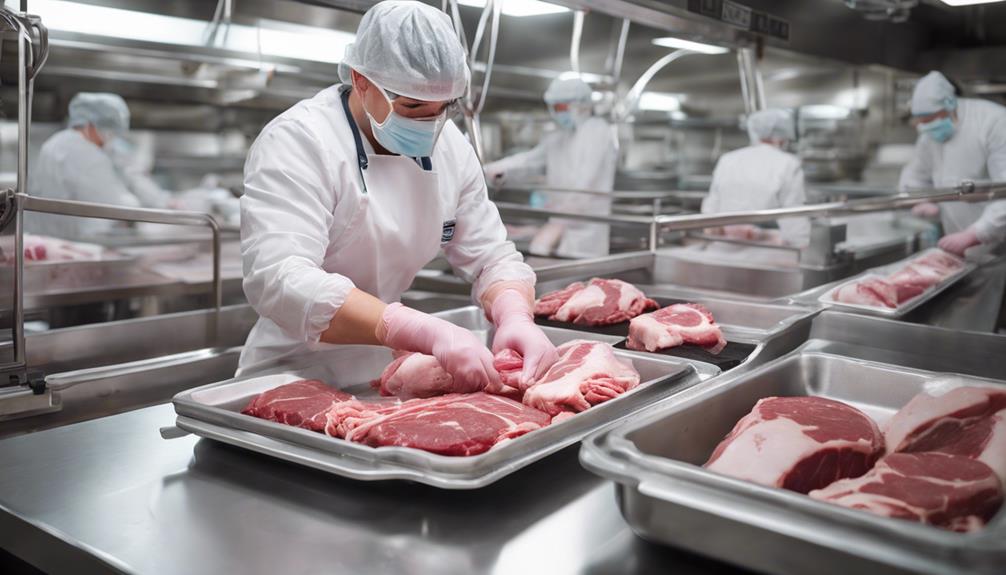
When handling food, it's essential to change gloves at key times to maintain food safety.
These include:
- After touching raw meat to prevent cross-contamination.
- Before handling produce to avoid spreading pathogens.
- Whenever switching between tasks involving different types of foods.
Following these practices helps uphold hygiene standards and reduce the risk of foodborne illnesses.
Cross-Contamination Prevention Tips
After handling raw meat, changing gloves is important to prevent cross-contamination and ensure food safety. When moving from handling raw meat to working with produce, putting on a new pair of disposable gloves is essential. This simple step helps avoid transferring harmful pathogens from the meat to the fresh food items.
By switching gloves between different tasks like handling food and working with produce, we can greatly reduce the risk of cross-contamination. Ensuring that hands are washed and new gloves are worn before touching any food can make a substantial difference in maintaining hygiene standards.
Importance of Glove Changes
At what critical moments should we consider changing gloves to guarantee food safety and prevent cross-contamination? Changing gloves is vital in food handling to prevent the spread of foodborne illnesses. Here are key times when glove changes are essential:
| Key Times to Change Gloves |
|---|
| Before handling raw meat |
| After touching raw produce |
| When switching between raw meat and ready-to-eat foods |
| After handling raw meat |
| After handling raw produce |
These moments ensure that we maintain proper hygiene practices and reduce the risk of cross-contamination. Remember to use disposable gloves and change them regularly, especially after hours of continuous use or any contact with potential contaminants.
Hygiene Best Practices
Maintaining proper hygiene practices includes changing gloves at specific key times to ensure food safety and prevent cross-contamination. When working in food service, it's essential to adhere to hygiene standards by changing gloves at the right moments. Remember these key times for changing gloves:
- After handling raw meat to avoid cross-contamination.
- Before touching produce to maintain cleanliness.
- After tasks like handling garbage or taking a break to prevent contamination.
Risks of Not Changing Gloves
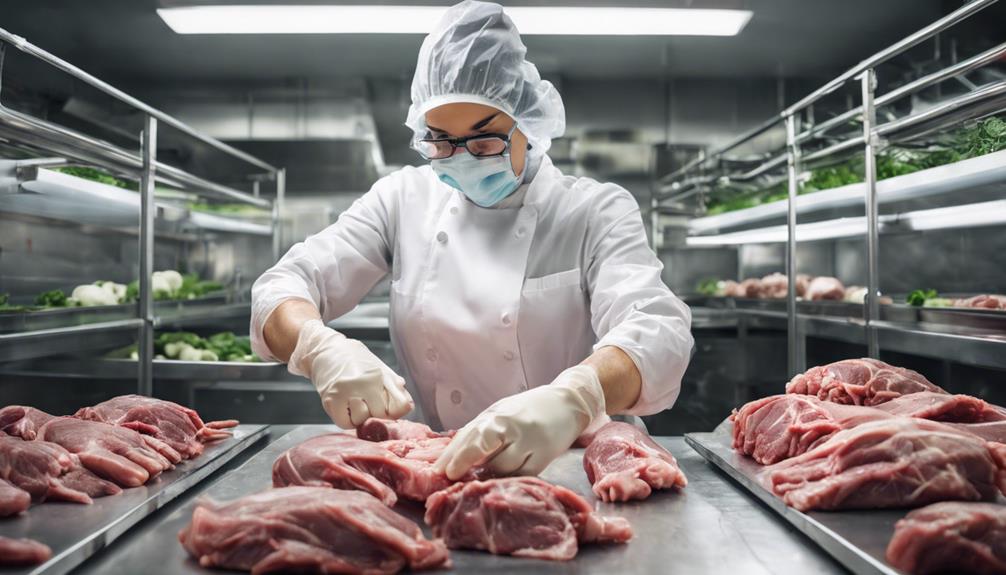
Not changing gloves when handling raw meat can lead to cross-contamination, posing serious risks to food safety. Bacteria can easily spread from raw meat to other surfaces or ready-to-eat foods if gloves aren't changed regularly.
This negligence increases the likelihood of foodborne illnesses and jeopardizes the well-being of consumers.
Glove Cross-Contamination Risk
Improper glove changing practices greatly increase the risk of cross-contamination between raw meat and produce. When gloves aren't changed appropriately, harmful bacteria from raw meat can easily transfer to produce, putting consumers at risk.
To mitigate this danger, it's essential to adhere to strict glove changing protocols. Even if gloves are washed, they may still harbor bacteria, leading to potential contamination issues. Proper glove changing practices are fundamental in upholding food safety standards and preventing cross-contamination between different food items.
Maintaining hygiene through the regular changing of gloves when moving from handling raw meat to produce is important for ensuring the safety and well-being of consumers. Remember, a simple glove change can make a significant difference in food safety.
Bacterial Spread Concerns
Concerns regarding bacterial spread due to not changing gloves include the critical risk of foodborne illness outbreaks stemming from cross-contamination. Handling raw meat without changing gloves poses a significant contamination risk, as bacteria can easily transfer from one surface to another.
Even if gloves are washed, they may still harbor bacteria, increasing the chances of spreading pathogens. Essential glove changing practices are crucial for upholding food safety standards and preventing the transmission of harmful microorganisms.
Maintaining good hygiene by changing gloves promptly when necessary is essential in minimizing the risks of contamination in food handling processes. By following these practices diligently, food handlers can help reduce the potential for bacterial spread and uphold the integrity of the food they prepare.
Guidelines for Food Handling Gloves
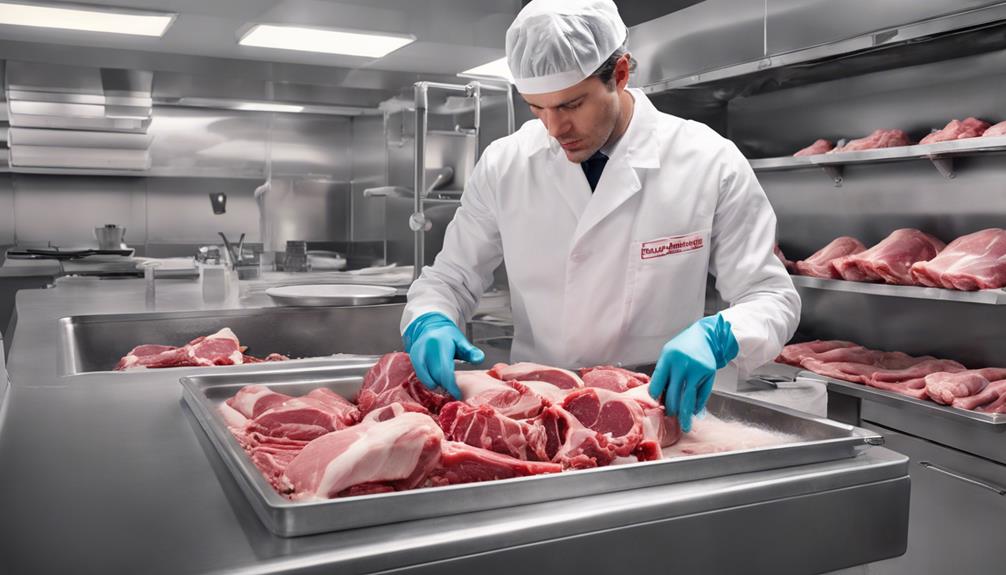
When handling food, following specific guidelines for food handling gloves is essential to uphold food safety standards. It's vital to change gloves appropriately to prevent cross-contamination and guarantee the safety of the food being prepared. Here are some key points to contemplate:
- Gloves must be changed before handling different types of food: This practice helps prevent the transfer of bacteria or pathogens between different food items during preparation.
- Food handlers need to change gloves after touching anything that could contaminate their hands: By changing gloves after potential sources of contamination, such as raw meat or unwashed produce, the risk of foodborne illnesses is reduced.
- Workers are required to put on a new pair of gloves after coughing or sneezing: This step is essential to maintain hygiene standards and avoid the spread of germs to the food being handled.
Following these guidelines ensures that proper hygiene is maintained during food preparation, safeguarding the health of consumers.
Single-Use Vs. Reusable Gloves
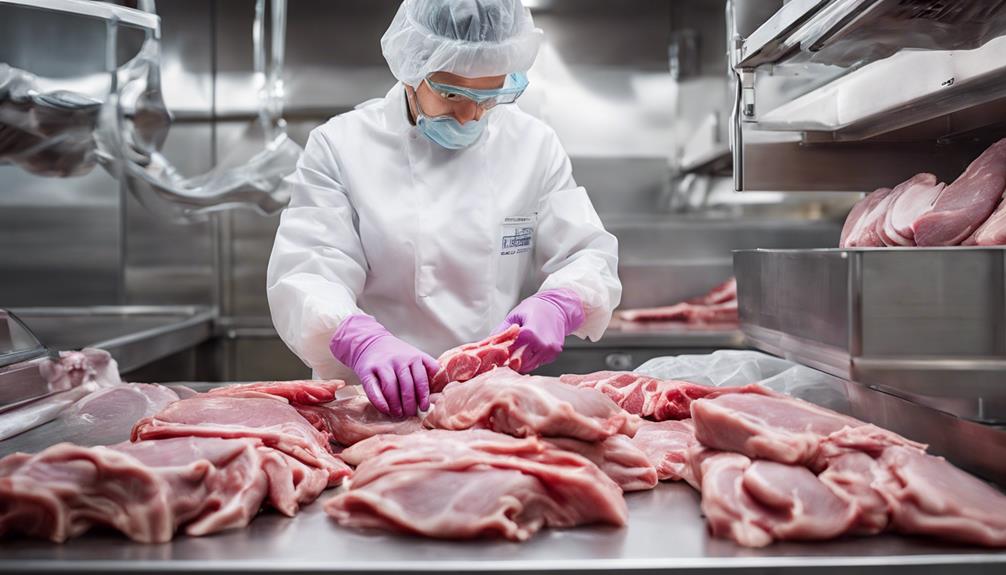
After discussing the guidelines for food handling gloves, it becomes important to differentiate between single-use disposable and reusable gloves to understand their respective advantages and applications. Single-use gloves are designed to be discarded after one use to prevent cross-contamination and uphold hygiene standards. They're convenient for tasks with high contamination risks, such as handling raw meat, to minimize contamination risks and the spread of pathogens.
On the other hand, reusable gloves, made from materials like latex or nitrile, can be washed and sanitized for multiple uses, offering a more cost-effective solution for tasks with lower contamination risks.
Choosing between single-use and reusable gloves is essential to maintain food safety and prevent contamination. Single-use gloves are commonly used in healthcare settings and food handling where hygiene is paramount, while reusable gloves find more utility in tasks where the risk of contamination is lower and cost-effectiveness is a priority. Understanding the differences between these two types of gloves is vital in upholding proper hygiene practices and ensuring food safety.
Best Practices for Glove Use
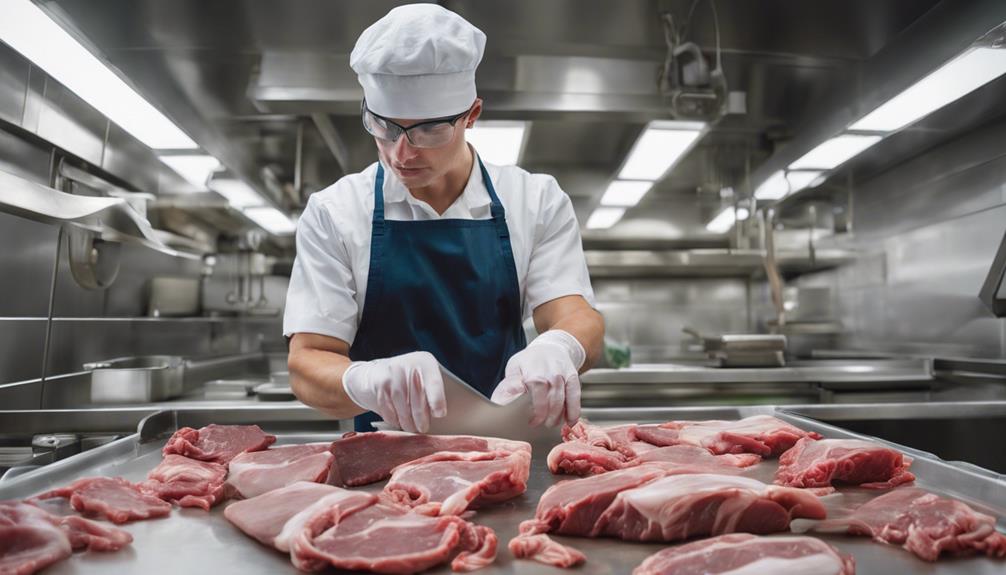
To guarantee proper food handling practices, it's essential to stick to best practices for glove use.
- Food Workers Required: Gloves are a necessity for all food workers to maintain hygiene standards and prevent contamination.
- Single Use: Gloves should be used only once to avoid the risk of transferring pathogens between different tasks or food items.
- Changing tasks: Whenever switching tasks, especially after handling raw chicken, changing gloves is vital to prevent cross-contamination.
Adhering to these practices ensures the safety of both the food being prepared and the customers consuming it.
Remember, gloves should be changed every four hours of continuous use to prevent pathogen growth. Always wash hands thoroughly before putting on new gloves, especially after touching your hair or face, to maintain high levels of cleanliness.
Compliance and Safety Measures
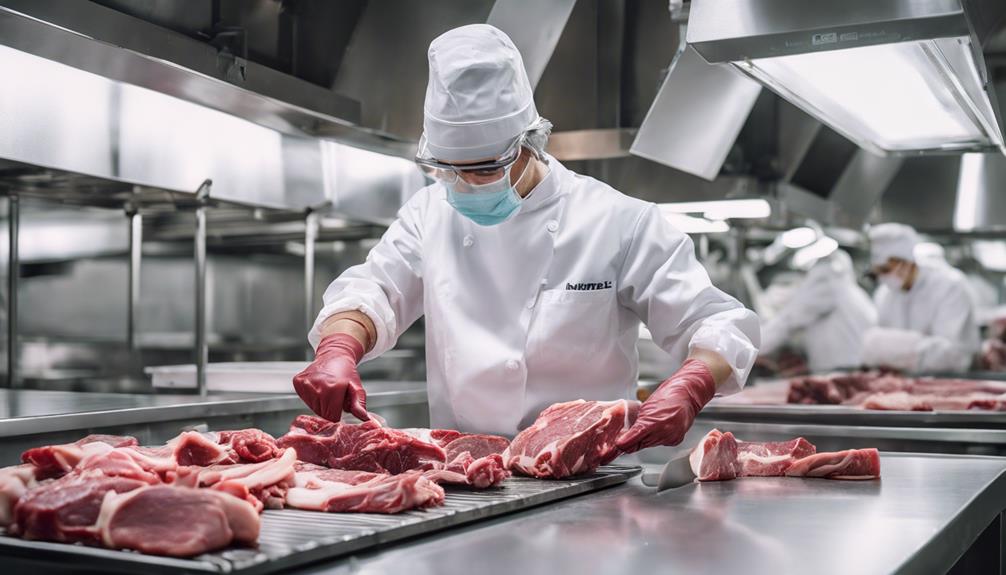
Compliance with FDA guidelines on glove changing is a vital aspect of maintaining food safety standards. Adhering to these protocols is essential to prevent cross-contamination and uphold proper hygiene when handling raw meat and produce. By following safety measures for glove changing, the risk of foodborne illness outbreaks can be greatly reduced. Regularly changing gloves is critical to prevent the transfer of pathogens and protect both customers and food handlers.
Ensuring that gloves are changed promptly and appropriately is key to preventing the spread of harmful bacteria and viruses. The FDA guidelines serve as a framework to promote best practices in food handling and minimize the risk of contamination. By being diligent in glove changing procedures, food establishments can maintain high food safety standards and safeguard public health. It's imperative for all food handlers to prioritize compliance with these guidelines to create a safe environment for food preparation and consumption.
Frequently Asked Questions
How Often Should You Change Your Gloves When Handling Raw Meat?
When handling raw meat, I change gloves frequently to prevent contamination. It is crucial to switch gloves immediately after touching raw meat to safeguard against harmful bacteria. Regular glove changes guarantee food safety for all.
When Should a Food Handler Change Their Gloves?
When I handle food, changing gloves becomes my ritual. The moment my tasks shift, swapping gloves is my dance. A glove for raw meat, another for produce – a rhythm of safety.
When Must Disposable Gloves Be Replaced?
When must disposable gloves be replaced? I change gloves as soon as they are torn or dirty to prevent contamination. It's important to switch them every 4 hours of continuous use and after handling raw meat.
Should Proper Handwashing and Glove Use Must Be Done After Handling Raw Meat to Avoid?
After handling raw meat, I always make sure to wash my hands and change gloves to prevent cross-contamination. This practice is essential for food safety and helps avoid spreading harmful bacteria that could cause foodborne illnesses.
When handling raw meat and produce, should food handlers change gloves before or after racking the raw food?
When handling raw meat and produce, food handlers should change gloves before racking the raw food. To prevent cross-contamination, it’s crucial to switch gloves frequently and wash hands between tasks. Following proper food safety protocols, including how to rack raw food, is essential for preventing foodborne illness.
Conclusion
To wrap up, make sure to switch your gloves when dealing with raw meat and produce to avoid cross-contamination.
It's like playing a game of 'hot potato' with bacteria – except in this scenario, you certainly don't want to be the one left holding it!
Stay safe, stay clean, and keep those gloves fresh to guarantee your food handling practices are excellent.

